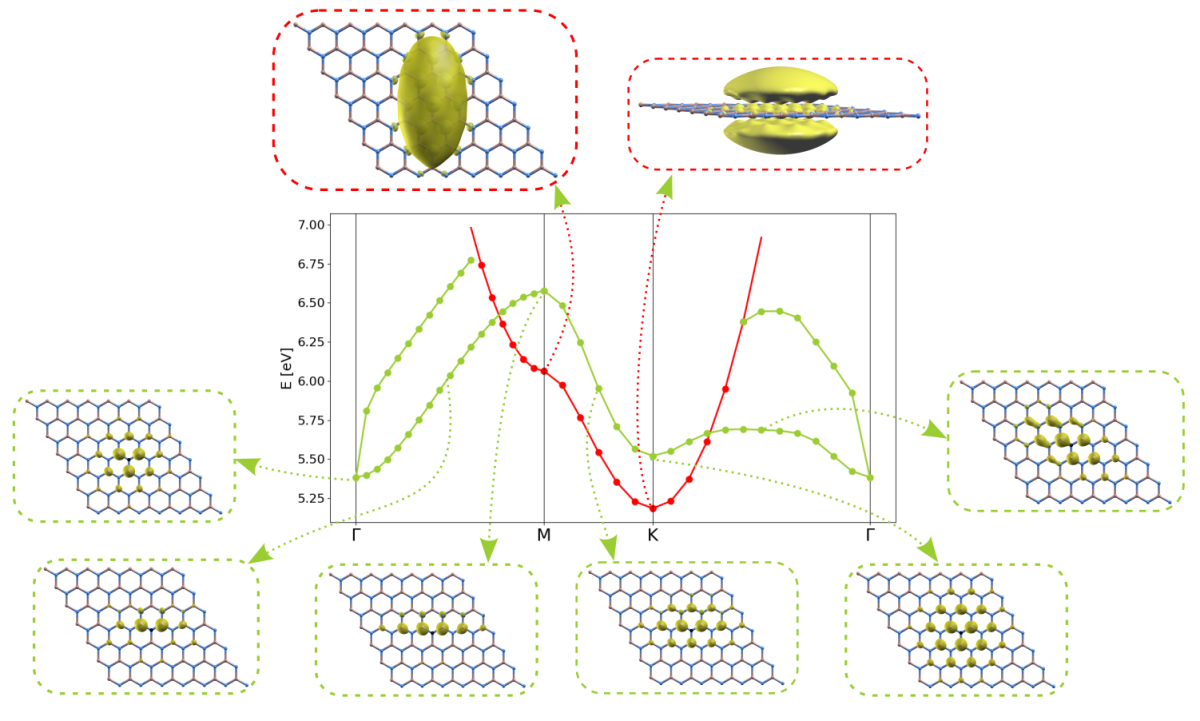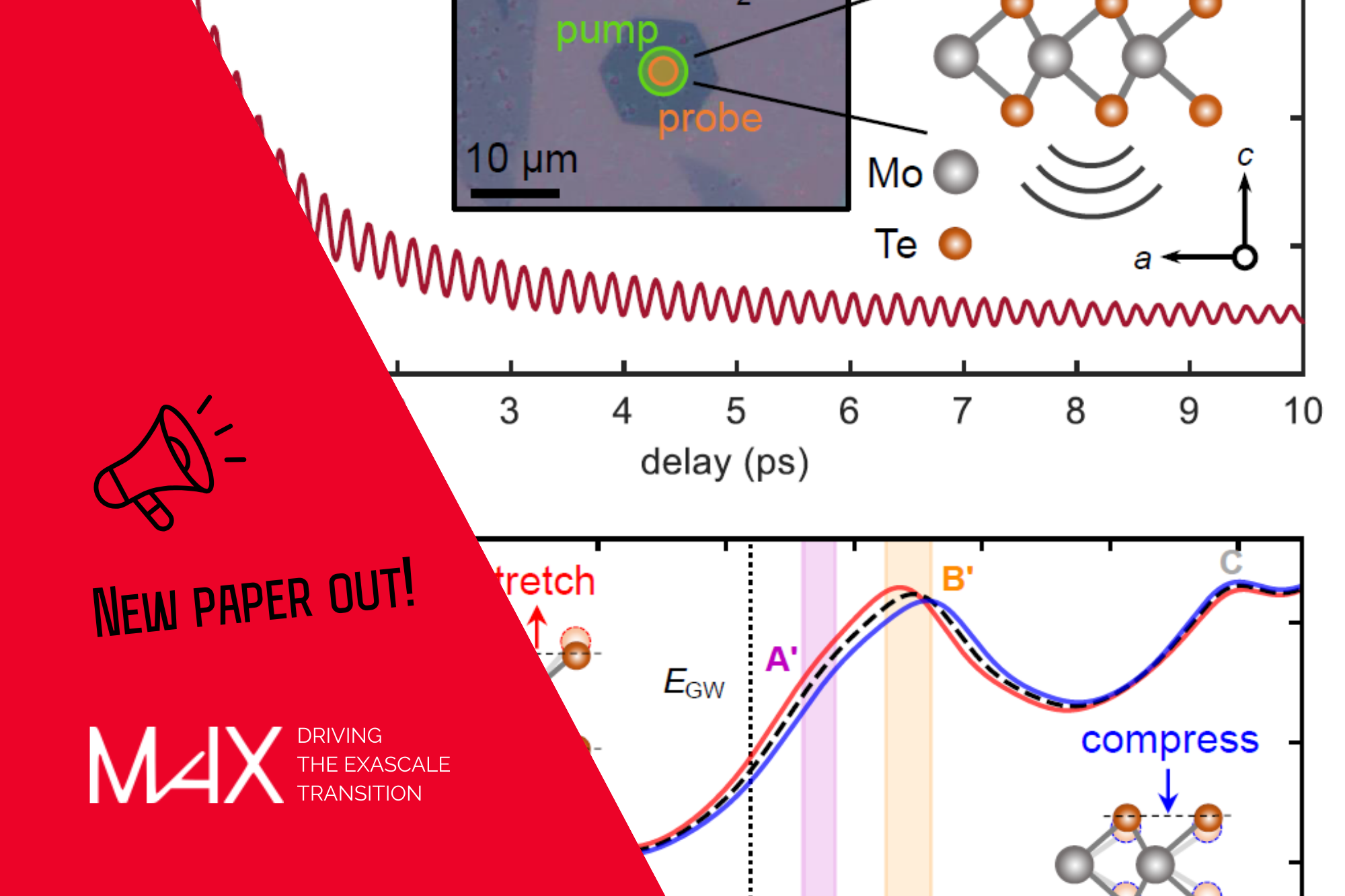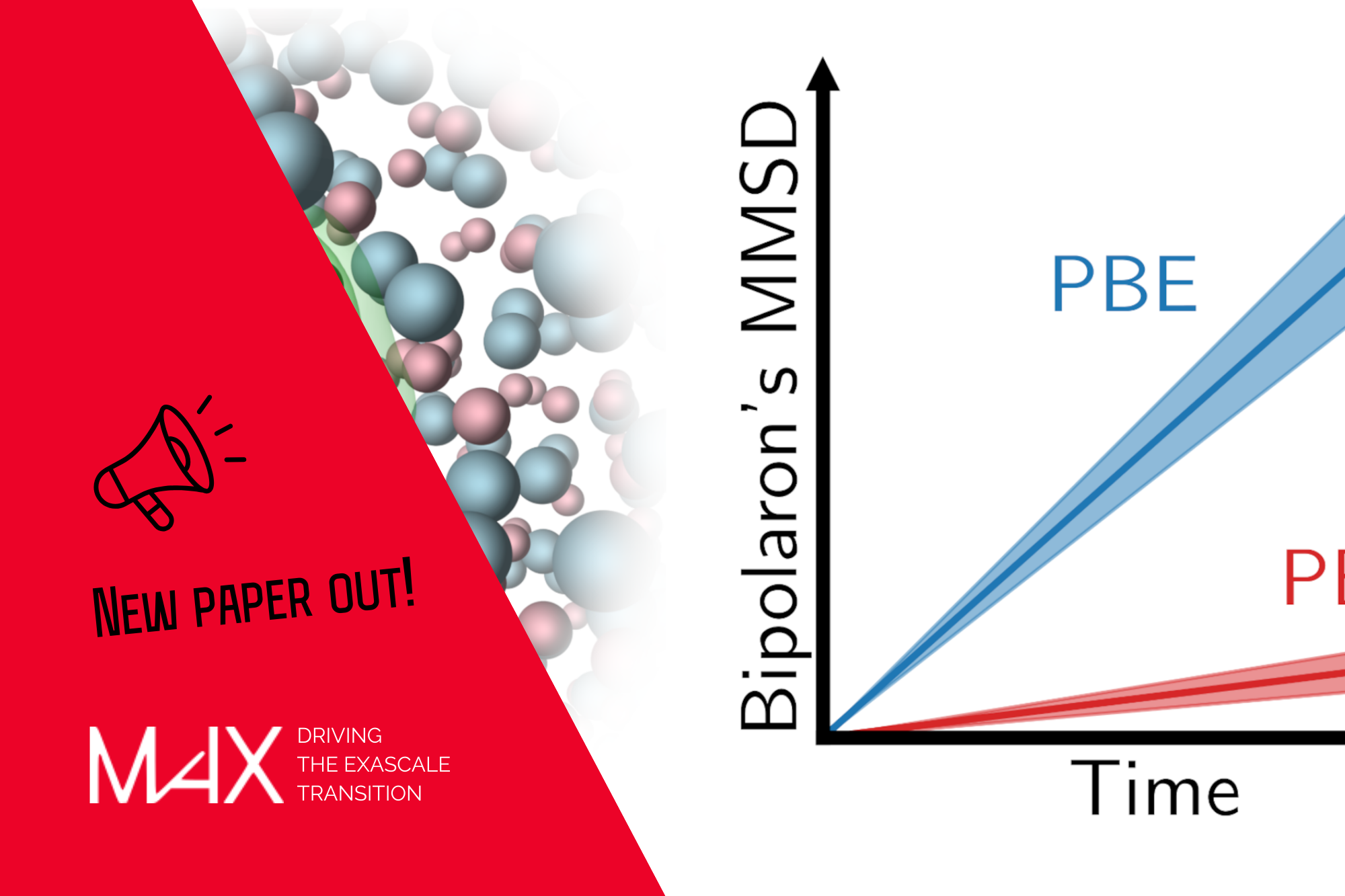Investigating Luminescence in Monolayer Hexagonal Boron Nitride: Examining Exciton-Phonon Interaction and Substrate Influence
A team of researchers investigated the optical response of monolayer hexagonal boron nitride (m-hBN) using a novel approach that considers the influence of atomic vibrations on luminescence spectra.

Figure: Details of the exciton dispersion relations of monolayer hexagonal BN, showing the calculated energies of excited electron-hole pairs as a function of their center-of-mass momentum. The insets show the spatial localization of the exciton wave function at several different momenta for two exciton types: localized (green) and delocalized (red). The localized excitons are responsible for the photoluminescence signal, while the energy of the delocalized ones varies dependending on the substrate.
The optical properties of 2D crystals are related to the interaction of laser light with its electronic structure. Such properties are notoriously more difficult to describe than in 3D crystals. Yet, the complexities involved make them more interesting for a diverse range of potential optoelectronic applications.
<< Peculiar is the case of monolayer boron nitride (hBN). Despite being a deceptively simple system, hBN poses a scientific problem, since the luminescence spectra look different depending on the crystal growth technique and substrate (molecular beam epitaxy on graphite as opposed to exfoliation on silicon oxide)>> says Fulvio Paleari (CNR-Nano), one of the researchers involved in the team. << In this work, we attempted to theoretically investigate this issue, by developing and employing an advanced description of the interaction of electronic excitations (excitons) and lattice vibrations (phonons)>> continues Paleari.
Supported by MAX, this study highlights a strong correlation between the emission signal of m-hBN and its interaction with the substrate, leading to a transformation in its material properties from direct to indirect and affecting electron screening: << In one of the two cases (hBN on graphite) the substrate plays a pivotal role in the spectral features, while in the other case (hBN on silicon oxide) phonon-assisted spectral features are possible and can explain the results>> continues Paleari.
Carried out using the MaX codes Quantum ESPRESSO and YAMBO, this study represents the first test of a key MaX development goal, namely the first-principles description of exciton-phonon interaction in theoretical spectroscopy. This development is currently under implementation in the Yambo code and requires combining the phonon calculations done with Quantum ESPRESSO with the exciton results from Yambo, resulting in a new phonon-mediated, dynamical extension of the Bethe-Salpeter equation.
About Quantum Espresso
Quantum ESPRESSO (Quantum opEn-Source Package for Research in Electronic Structure, Simulation, and Optimisation) is a suite of applications for ab-initio electronic structure calculations using plane waves and pseudopotentials. The code is mostly written in modern Fortran.
About Yambo
YAMBO is an open-source code released within the GPL licence that implements ground-state as well as excited-state properties in an ab initio context.
Reference article:
https://doi.org/10.1103/PhysRevMaterials.7.024006



